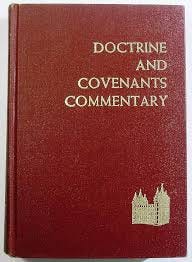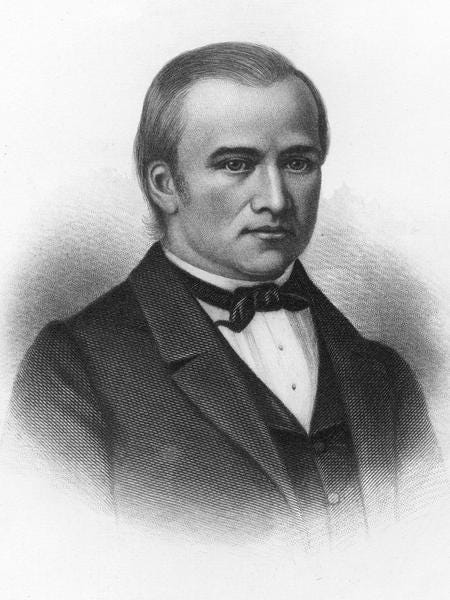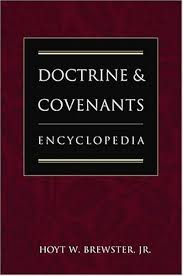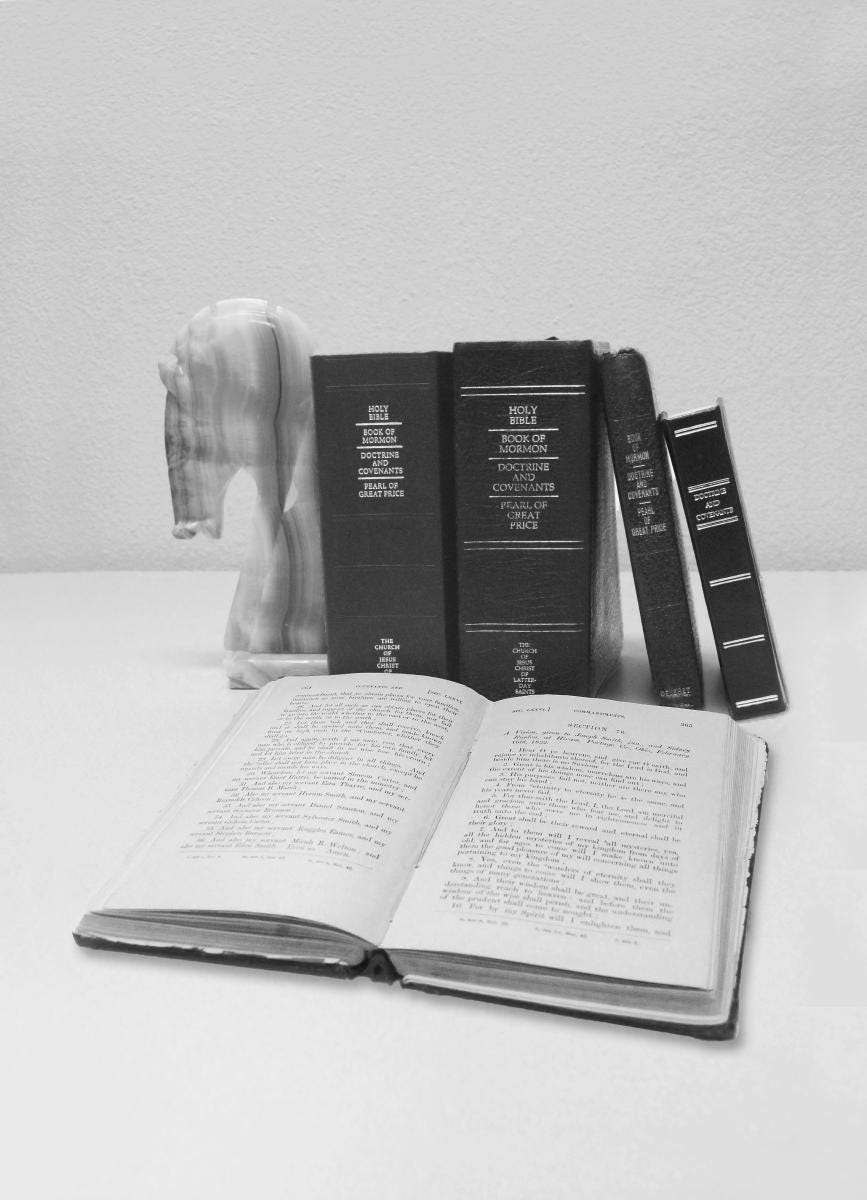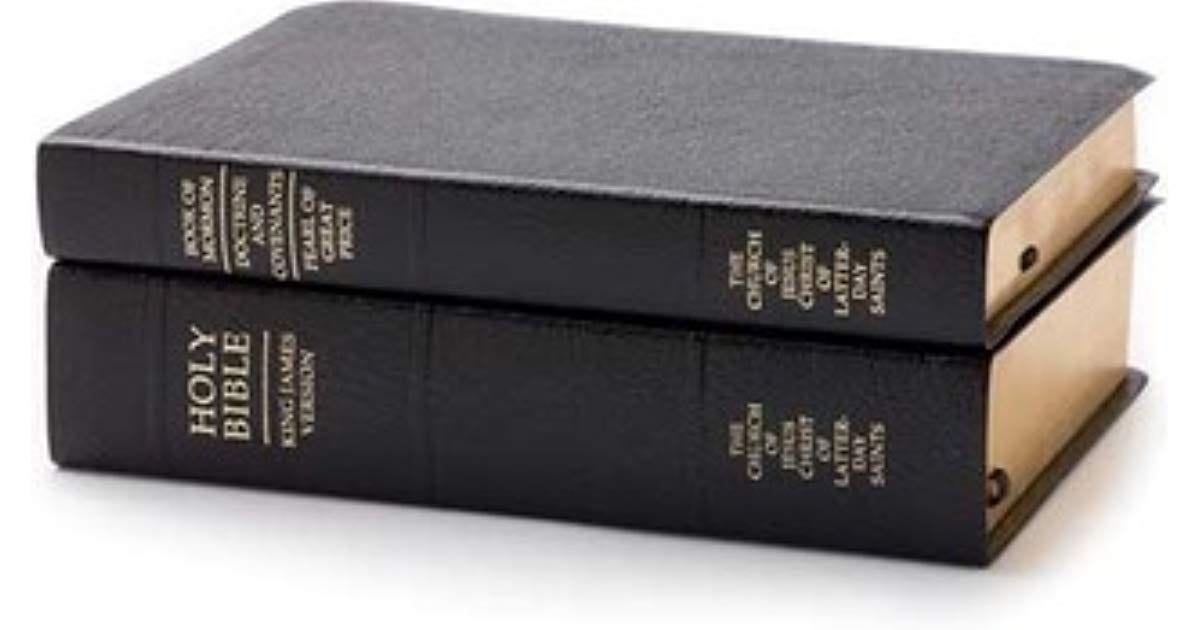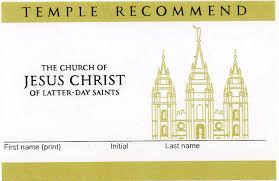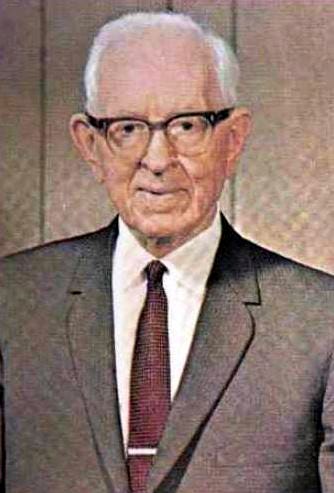The Duty of the Bishop
Historical Background and Reflections on Doctrine and Covenants Section 72
What is the historical background for Doctrine and Covenants Section 72?
In their Doctrine and Covenants Commentary, Smith and Sjodahl introduce this section as follows:
Having received the call to perform special missionary labors (Sec. 71), the Prophet and Sidney Rigdon went to Kirtland, September 3rd, 1831. The following day a number of Elders met with them, and after they had been conversing on their temporal and spiritual welfare, the Prophet received this Revelation, in which the Lord (1) designates Newel K. Whitney to be Bishop in Kirtland (1-8); (2) enumerates his duties (9-23); and (3) add instructions regarding the credentials of Saints going to Zion (24-6). (p. 425)
In his book A Joseph Smith Chronology, J. Christopher Conkling writes:
Dec. 3, 1831
Joseph and Sidney travel to Kirtland to begin their mission.
Dec. 4, 1831
Joseph and Sidney meet with the elders and members in Kirtland, and Joseph receives D&C 72.
Dec. 4, 1831-Jan. 8 or 10, 1832
Joseph and Sidney go on their missions to southern Ohio and throughout the state, preaching the gospel to counteract the anti-Mormon articles being written by Ezra Booth.
Dec. 19, 1831
In Independence, Bishop Partridge purchases 63 acres and 43 square yards for the Church for $130. (p. 29)
In his book The Revelations of the Prophet Joseph Smith, Lyndon W. Cook sheds more light on the historical background for D&C 72:
Date. 4 December 1831.
Place. Kirtland, Geauga County, Ohio.
Historical Note. On 1 December 1831, the Prophet received a revelation (section 71) instructing him and Sidney Rigdon to preach the gospel in the “regions round about.” In obedience to this directive, they stopped translating the Bible and on 3 December 1831 journeyed to Kirtland. On the following day several elders and members assembled in Kirtland, Ohio, to learn their duty and be edified. After those assembled had spend some time in conversation, the Prophet received section 72.
The revelation called Newel K. Whitney to be a bishop of the Church in Kirtland and explained his responsibilities in relation to those of Edward Partridge, the bishop in Missouri.
On 10 February 1832 Hyrum Smith and Reynolds Cahoon were called and ordained as counselors to Newel K. Whitney.
This revelation appears to be two separate revelations in the “Kirtland Revelation Book.” Verses 1-8 constitute one revelation, verses 9-26, the other.
Publication Note. Section 72 was first published in the Evening and Morning Star (December 1832) and was included as section 89 in the 1835 edition of the Doctrine and Covenants. (p. 118)
This is Bruce R. McConkie’s section heading for D&C 72:
Revelation given through Joseph Smith the Prophet, at Kirtland, Ohio, December 4, 1831. Several elders and members had assembled to learn their duty and to be further edified in the teachings of the Church. This section is a compilation of three revelations received on the same day. Verses 1 through 8 make known the calling of Newel K. Whitney as a bishop. He was then called and ordained, after which verses 9 through 23 were received, giving additional information as to a bishop’s duties. Thereafter, verses 24 through 26 were given, providing instructions concerning the gathering to Zion.
The Prophet Joseph Smith himself introduced this section as follows:
Knowing the mind of the Lord, that the time had come that the Gospel should be proclaimed in power and demonstration to the world, from the Scriptures, reasoning with men as in days of old, I took a journey to Kirtland, in company with Elder Sidney Rigdon on the 3rd day of December, to fulfill the above revelation. [Section 71.] On the 4th, several of the Elders and members assembled together to learn their duty, and for edification, and after some time had been spent in conversing about our temporal and spiritual welfare, I received the following: [Section 72, follows.] (HC 1:239, December 4, 1831, Kirtland, Ohio.) (Roy W. Doxey, Latter-day Prophets and the Doctrine & Covenants, Vol. I., pp. 560-561)
Who was Newel K. Whitney? (see also here and here)
This is Hoyt W. Brewster, Jr.’s entry on Whitney, Newel K. in his Doctrine and Covenants Encyclopedia:
Mentioned in ten sections of the Doctrine and Covenants, Newel K. Whitney was an important cog in the wheels which moved the Church forward in its early days (D&C 63:42; 64:26; 72:8; 78:9; 82:11; 84:112; 93:50; 96:2; 104:39-41; 117:1, 11). Born on February 5, 1795, Whitney was almost ten years senior to the Prophet, whom he faithfully served.
After joining the Church in November 1830, Newel and his wife had a remarkable vision in which they were told to “prepare to receive the word of the Lord, for it is coming.” Shortly thereafter, a sleigh of strangers pulled up to Newel’s store in Kirtland, Ohio. One of the occupants alighted from the vehicle and strode up the stairs of Whitney’s establishment. “Newel K. Whitney, thou art the man!” exclaimed the stranger. To this friendly greeting, Newel replied, “You have the advantage of me. I could not call you by name as you have me.” “I am Joseph, the Prophet,” said the stranger. “You’ve prayed me here; now what do you want of me?” Thus began a long and cherished friendship.
The Prophet remained at Whitney’s home, where he was hospitably treated, and under whose roof some of the revelations now contained in the Doctrine and Covenants were received. Joseph’s trust in Newel extended beyond the financial finesse which the latter possessed, for the Prophet often trusted his friend with some of his most secret thoughts and revelations. Among these was the principle of plural marriage. It was Newel K. Whitney who preserved the written revelation on plural marriage which eventually was given to Brigham Young to be had in the archives of the Church, and it was Elder Whitney who performed the ceremony in which his own daughter became the first plural wife by divine authority in this dispensation.
In December 1831, he was called as the second bishop of the Church (D&C 72). He functioned in this office in Ohio and Illinois before being called as the Presiding Bishop of the Church on April 6, 1847. He served faithfully until his death on September 23, 1850. Of him, the Deseret News said: “Thus in full strength and mature years, has one of the oldest, most exemplary, and most useful members of the Church fallen suddenly by the cruel agency of the King of Terrors. In him, the Church suffers the loss of a wise and able counselor and a thorough and straightforward business man. It was ever more gratifying to him to pay a debt than to contract one, and when all his debts were paid he was a happy man, though he had nothing left but his own moral and muscular energy. He has gone down to the grave, leaving a spotless name behind him” (Jenson 1:222-27) (pp. 633-634)
See also: Ahashdah; One Wife
The authors of the first volume of Saints share the following in relation to this section:
A few days after the baby’s burial, Joseph returned to the work despite his grief. Following the Lord’s commandment, he set out for Missouri on April 1 with Newel Whitney and Sidney, who was still weak from the attack but had recovered enough to travel.19 The Lord had recently called Newel to serve as a bishop of the Saints in Ohio and directed him to consecrate surplus money from his profitable businesses to help support the store, printing office, and land purchases in Independence.20
The Lord wanted the three men to go to Missouri and covenant to cooperate economically with leaders in Zion to benefit the church and better care for the poor. He also wanted them to strengthen the Saints so they would not lose sight of their sacred responsibility to build the city of Zion.21
When they arrived in Independence, Joseph convened a council of church leaders and read a revelation that called on him, Edward Partridge, Newel Whitney, and other church leaders to covenant with each other to manage the church’s business concerns.22
“I give unto you this commandment, that ye bind yourselves by this covenant,” the Lord declared, “every man seeking the interest of his neighbor, and doing all things with an eye single to the glory of God.” Bound thus together, they called themselves the United Firm.23
While he was in Missouri, Joseph also visited members of the old Colesville Branch and others who had settled in the area. Church leaders seemed to be working well together, the new printing office was preparing to publish the first issue of The Evening and the Morning Star, and many church members were eager to build up the city.24
But Joseph sensed hard feelings toward him from some of the Saints, including a few of their leaders. They seemed to resent his choice to stay in Kirtland rather than move permanently to Missouri. And some still seemed upset about what had happened on his last visit to the area, when he and some of the elders had disagreed about where to establish Zion in Missouri.
Their resentment surprised him. Did they not realize he had left his grieving family and traveled eight hundred miles just to help them?25
With this historical background in mind, let’s examine and appreciate the revelation itself:
Hearken, and listen to the voice of the Lord, O ye who have assembled yourselves together, who are the high priests of my church, to whom the kingdom and power have been given.
For verily thus saith the Lord, it is expedient in me for a bishop to be appointed unto you, or of you, unto the church in this part of the Lord’s vineyard.
And verily in this thing ye have done wisely, for it is required of the Lord, at the hand of every steward, to render an account of his stewardship, both in time and in eternity.
For he who is faithful and wise in time is accounted worthy to inherit the mansions prepared for him of my Father.
Verily I say unto you, the elders of the church in this part of my vineyard shall render an account of their stewardship unto the bishop, who shall be appointed of me in this part of my vineyard.
These things shall be had on record, to be handed over unto the bishop in Zion.
And the duty of the bishop shall be made known by the commandments which have been given, and the voice of the conference.
And now, verily I say unto you, my servant Newel K. Whitney is the man who shall be appointed and ordained unto this power. This is the will of the Lord your God, your Redeemer. Even so. Amen. (D&C 72:1-8)
This revelation was given to the elders of the Church, and specifically to the high priests. In a previous post we learned something about the meaning of the office of high priest. The Lord needed a bishop in Kirtland, an important spot in His vineyard. One of the duties of the bishop is to receive the Elders’ accounts of their stewardships. Other duties of the bishop would be made known later, but the Lord called Newel K. Whitney as the first bishop for Kirtland.
Monte S. Nyman’s commentary on these verses is helpful:
In accordance with the revelation given a few days earlier (see D&C 71), Joseph is given another revelation directing him to appoint a bishop in Kirtland (see D&C 72:2). This appointment was also in accordance with a previous revelation. In November 1831, the Lord had told four elders, through the Prophet Joseph, that “in the due time of the Lord, other bishops [are] to be set apart unto the church” (D&C 68:14). The requirement for every steward to “render an account” (D&C 72:3) in time was to be given to the bishop (v. 5). The account given in eternity would be unto the Lord (v. 3). The faithful and wise stewards in time would inherit a mansion in eternity prepared by the Father for him (v. 4). This promise was also given previously (see D&C 59:2; see also John 14:2). The bishop in Kirtland was to be accountable to the bishop in Zion (see D&C 72:6), according to the directions he was given in the revelations and in the conferences (v. 7). Newel K. Knight was to be appointed and ordained to the office of bishop in Kirtland (v. 8). (Vol. 2, p. 10)
(See also Hoyt W. Brewster, Jr.’s entry on “Bishop” in his Doctrine and Covenants Encyclopedia)
Regarding these verses, Smith and Sjodahl observe:
A Bishop for Kirtland.
High Priests of my Church] At the Conference in Kirtland, June 1st, 1831, a number of Elders were ordained as High Priests. “A High Priest,” the Prophet Joseph explains, “is a member of the same Melchizedek Priesthood with the Presidency, but not of the same power and authority in the Church” (Hist. of the Church, Vol. II., p. 447).
-
In this thing ye have done wisely] Those assembled had, it seems, agreed upon the appointment of a Bishop in Kirtland, and the Lord commended them for this, adding that every steward must render an account of his stewardship “both in time and eternity.”
He who is faithful and wise in time *** to inherit the mansions prepared] Brigham Young says:
“We are trying to teach this people to use their brains, that they may obtain knowledge and wisdom to sustain themselves and to dictate for others; that they may be worthy to be made Priests and Kings to God, which they never can unless they learn, here or somewhere else, to govern, manage, legislate, and sustain themselves, their families, and friends, even to the making of nations, and nation after nation. If they cannot attain to this they will have to be servants somewhere” (Jour. of Dis., Vol. XI., p. 238).
-
-
-
Newel K. Whitney] See Secs. 63:42; 64:26. He is the first Bishop appointed specially for Kirtland. The organization of the Church was a gradual unfoldment, as the needs of the people required. (pp. 425-426)
The revelation in D&C 72 continues:
The word of the Lord, in addition to the law which has been given, making known the duty of the bishop who has been ordained unto the church in this part of the vineyard, which is verily this—
To keep the Lord’s storehouse; to receive the funds of the church in this part of the vineyard;
To take an account of the elders as before has been commanded; and to administer to their wants, who shall pay for that which they receive, inasmuch as they have wherewith to pay;
That this also may be consecrated to the good of the church, to the poor and needy.
And he who hath not wherewith to pay, an account shall be taken and handed over to the bishop of Zion, who shall pay the debt out of that which the Lord shall put into his hands.
And the labors of the faithful who labor in spiritual things, in administering the gospel and the things of the kingdom unto the church, and unto the world, shall answer the debt unto the bishop in Zion;
Thus it cometh out of the church, for according to the law every man that cometh up to Zion must lay all things before the bishop in Zion.
And now, verily I say unto you, that as every elder in this part of the vineyard must give an account of his stewardship unto the bishop in this part of the vineyard—
A certificate from the judge or bishop in this part of the vineyard, unto the bishop in Zion, rendereth every man acceptable, and answereth all things, for an inheritance, and to be received as a wise steward and as a faithful laborer;
Otherwise he shall not be accepted of the bishop of Zion.
And now, verily I say unto you, let every elder who shall give an account unto the bishop of the church in this part of the vineyard be recommended by the church or churches, in which he labors, that he may render himself and his accounts approved in all things.
And again, let my servants who are appointed as stewards over the literary concerns of my church have claim for assistance upon the bishop or bishops in all things—
That the revelations may be published, and go forth unto the ends of the earth; that they also may obtain funds which shall benefit the church in all things;
That they also may render themselves approved in all things, and be accounted as wise stewards.
And now, behold, this shall be an ensample for all the extensive branches of my church, in whatsoever land they shall be established. And now I make an end of my sayings. Amen. (D&C 72:9-23)
The bishop keeps the Lord’s storehouse, receives reports from the elders, cares for the poor and needy, pays debts, and certifies the worthiness of elders. These duties correspond with the Lord’s law, which we studied in D&C 42, according to which every man that comes up to Zion lays all things before the bishop in Zion. The bishop certifies that men are worthy of and recommended by the Church, as wise stewards and faithful laborers, for an inheritance in Zion. The bishop also assists the stewards over the literary concerns of the Lord’s Church, such as the publication and distribution of the revelations. All of this is to benefit the Church in all things, to enable the elders to become wise stewards, and to serve as an example for the entire Church.
Duties of the Bishop in Kirtland.
The duties of the Bishop in Kirtland are here enumerated. They are, (a) to keep the Lord’s storehouse and receive the funds of the Church in that part of the vineyard (v. 10); that is, to look after the needy and preside over the temporal affairs of the Church; (b) to keep an account of property consecrated for public use, as commanded (Sec. 42:31-2); and administer to the need of the Elders (v. 11), whether these were able to pay for the services rendered, or not (vv. 12-13); the Lord here makes it clear that faithful service in administering in spiritual things is also a contribution to the general funds (vv. 14-15). (c) The Bishop is, further, under obligation to furnish every Elder entitled to it, a certificate, by which the Bishop in Zion may know that the bearer has the right to receive an inheritance (vv. 16-18); he is (d) to receive an account of the labors of every Elder, in order that these might be properly recommended to the Branches they might visit (v. 19); (e) he was, finally, to aid, financially, the “stewards” appointed to look after the literary interests of the Church (Sec. 72:20). “This,” we read, “shall be an ensample” - a pattern, or model for imitation - for all Branches of the Church (v. 23). All were to have Bishops with similar duties to perform. (p. 427)
Is this how the modern Church of Jesus Christ of Latter-day Saints works? The duties of modern LDS bishops are similar to those outlined in these verses, but much has changed since 1831. Because we no longer even try to live the law of consecration (except by lip service in the Temple) as outlined in the Doctrine and Covenants, many of these revelations seem to be obsolete, at least for a time. However, the true doctrines and principles taught in these revelations are not obsolete, and if the city of Zion, the New Jerusalem, will ever be built, we must return to these true doctrines and principles.
The revelation in D&C 72 concludes:
A few words in addition to the laws of the kingdom, respecting the members of the church—they that are appointed by the Holy Spirit to go up unto Zion, and they who are privileged to go up unto Zion—
Let them carry up unto the bishop a certificate from three elders of the church, or a certificate from the bishop;
Otherwise he who shall go up unto the land of Zion shall not be accounted as a wise steward. This is also an ensample. Amen. (D&C 72:24-26)
The closest thing that we have to this in modern times is a Temple recommend. Why don’t we have certificates or recommendations for inheritances in Zion? Have we given up on the Lord’s revelations? It is a great privilege and blessing to go up unto Zion, and the Holy Spirit designates or appoints those who receive this great privilege and blessing.
Regarding the conclusion to this section Smith and Sjodahl write:
Concerning Credentials.
-26. Members of the Church going to Zion were to carry a Bishop’s certificate, or recommend, to show their standing in the Church. “Otherwise he *** shall not be accounted as a wise steward” (v. 26). Wisdom was required in those who went to Zion. They would show their wisdom in the management of their temporal affairs.
Brigham Young is a striking illustration of wise management. In September, 1833, he came to Kirtland, absolutely destitute, a widower with two children to take care of. He had borrowed a pair of shoes and some other articles of clothing, and he had spent every dollar he had on missionary labors. Of the thirty or forty Elders who came to Kirtland that fall, he was the only one who remained there during the winter. The others went wherever they could obtain higher wages than in Kirtland. He went to work for Brother William F. Cahoon, one of the trustees of the Temple. As for wages, Brother Cahoon divided what little he had with Brigham Young. But, when the work was done, the balance due was paid, and it was subsequently found that none of those who had left Kirtland for higher wages had been able to save as much as he had. He stayed in Kirtland till the year 1837, and then he practically abandoned property valued at $5,000. In Nauvoo he also left some houses, and came to Utah without a farthing, except a span of horses, a carriage, and harness, all of which had been given him in payment for a house in Nauvoo. See Journal of Discourses, Vol. XI., pp. 295-6. Brigham Young was a wise stweard, because he always placed the interests of the Kingdom of God first. (p. 428)
Smith’s and Sjodahl’s summary of the revelations given in 1831 is also noteworthy:
General Notes
This is the last of thirty-seven Revelations given during the year 1831, the second of the existence of the Church. The development was marvelous. During this year the Prophet moved to Kirtland, and this city was shortly afterwards designated as a gathering place of the Saints. The important office of the Bishopric was instituted (Secs. 41 and 72); the Revelation on Church government was given (Sec. 42); a Church Historian was appointed (47:4), and missionaries were sent to Missouri (Sec. 52). Rules were given for the United Order (Sec. 51), and High Priests were ordained; the Prophet made a trip to Missouri, and shortly afterwards a Revelation was received designating Independence, Jackson County, in that State, as the center of the Land of Zion (Sec. 57); the foundations of Zion were then laid, and the Temple ground dedicated, and at the same time it was predicted that the “blessings” would come after “much tribulation”; that is, that the Saints would pass through many trails before Zion would be redeemed. The vision of the Destroyer on the waters was received on the return journey to Kirtland (Sec. 61); a press was bought for the printing of a Church paper at Independence, The Evening and Morning Star, and arrangements were made for the publication of the Book of Commandments and Revelations at the same place.
There is a wonderful feature connected with the Revelations - their Unity. Although neither the Prophet Joseph nor his associates had any pre-arranged plan regarding the work in which they were engaged, yet every Revelation fits into its place perfectly, as does each separate stone which the skilful architect lays in the walls of his magnificent cathedral, and as we follow the development from Section to Section, we perceive that there is a plan so grand, so beautiful, and so well adapted to human needs, as to leave no room for doubt concerning its divine origin. Each Revelation, considered by itself, though full of beauty, may be but a stone detached from the building to which it belongs, but seen as party of the entire structure, it speaks with convincing eloquence of the wisdom, power, and love of the Divine Builder of the Church, our Lord Jesus Christ. (pp. 428-429)
My readers might think that sometimes I am too hard on the modern Church of Jesus Christ of Latter-day Saints. In some ways, however, I think that I have been too gentle. Old Testament and Book of Mormon prophets foresaw the problems that would exist in the modern Church, and modern prophets have not always been silent about these problems either. Consider, for example, Joseph Fielding Smith’s commentary on this section of the Doctrine and Covenants:
In these revelations the Lord endeavored to teach the members of the Church the law of consecration. It had been decreed that Zion (meaning at that time Jackson County) was to be built up on this divine law. All who went there were expected to consecrate their property, and then they were to receive stewardships severally according to their needs. The Lord’s plan was that the poor and the needy should be assisted, and all who had substance should impart according to the Lord’s divine law. [Sec. 42:30-42] If this plan could have been carried out, what a glorious thing it would have been. Such principles of right and justice will be required when Zion is redeemed, for it cannot be redeemed on any other principle. If mankind could only get the vision as the Lord intends it, the troubled world could live in peace and equality, and all would be extremely happy. While selfishness exists in the hearts of men, justice and equality can never be practiced. While class is arrayed against class, and each is seeking for every advantage at the expense of the other, there will be misery, hatred and crime in the world. It was a difficult thing for the Latter-day Saints in Missouri to abide by this law, for several reasons. In the first place they had not eliminated selfishness from their hearts; they failed to comprehend the advantages of the plan the Lord offered to them. [Sec. 105:1-6.] We today, could fail miserably for the same reasons. Then, when the people are not all of one heart and mind, the law of consecration cannot be established, and a lesser law must be given [Sec. 119], and even this lesser law only a minority of the members of the Church are willing to receive at the present time. (Roy W. Doxey, Latter-day Prophets and the Doctrine & Covenants, Vol. I., p. 563)





